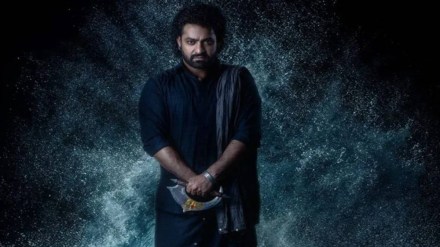Jr. NTR’s latest film, Devara: Part 1, is set to make waves as it intertwines action with poignant real-life events. This Telugu action drama has garnered significant attention for its gripping narrative and impressive cast. Here’s everything you need to know about the film, including its inspiration, cast details, and release information.
Overview of Devara: Part 1
Devara: Part 1 was officially announced in April 2021, originally titled NTR30, before receiving its final title in May 2023. Directed by Koratala Siva and produced by Yuvasudha Arts and N. T. R. Arts, the film was initially conceived as a standalone project but was later divided into two parts. Filming took place in April 2023 across various locations, including Hyderabad and Goa. The film was released in theaters on September 27, 2024, and is one of the most anticipated Telugu films of the year.
Cast and Characters
Alongside Jr. NTR, the film features a stellar cast, including:
- Saif Ali Khan as Bhaira
- Janhvi Kapoor as Thangam
- Supporting roles include Shruti Marathe, Prakash Raj, Srikanth, Shine Tom Chacko, Narain, Kalaiyarasan, Murali Sharma, Ajay, and Abhimanyu Singh.
The True Story Behind Devara: Part 1
The film draws inspiration from the tragic Karamchedu massacre, a horrific incident that took place on July 17, 1985, in the Bapatla district of Andhra Pradesh. This dark chapter in history involved the brutal violence against the Madiga community (Dalits) by Kamma landlords, resulting in the deaths of six Madigas and numerous injuries.
Historical Context: The Kammas and Madigas
In the 1980s, Karamchedu had a population of about 13,600, with around 6,000 Kammas and 2,000 Scheduled Castes, primarily consisting of Madigas and Malas. The Kamma landlords owned most of the land and wielded significant power over the Dalits, who primarily worked as agricultural laborers under exploitative conditions.
The landlords’ oppression was systemic, involving physical violence and economic exploitation. Laborers were often punished severely for minor infractions, which exacerbated their already dire circumstances. This cycle of abuse set the stage for the tragic events that unfolded.
The Catalyst for Violence
The massacre was ignited by a seemingly trivial incident involving a young Madiga boy who objected to a Kamma boy washing his buffalo in a shared water tank. This protest escalated tensions, culminating in a deliberate attack by armed Kammas on the Madigas. Hundreds of Kammas descended upon Madiga wada, leading to widespread violence and destruction. Tragically, the local police failed to intervene, leaving the Madigas vulnerable to the onslaught.
Aftermath of the Karamchedu Massacre
In the wake of the massacre, widespread protests erupted throughout the state. Dalit leaders and activists, including Bojja Tharakam and Katti Padma Rao, mobilized efforts to establish a separate Dalit movement, forming the Andhra Pradesh Dalit Mahasabha. This organization sought to empower Dalits and advocate for their rights.
The state government responded with aid for the victims, and legal proceedings ensued. Initially, 159 individuals were sentenced to life imprisonment, but the Andhra Pradesh High Court overturned this ruling. A decade later, in 2008, the Supreme Court finally delivered a verdict, sentencing the main perpetrators to life imprisonment, while others received varying sentences.
